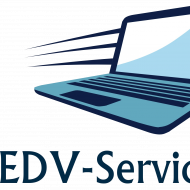CI/CD pipelines are themselves commonly configured in code, sometimes referred to as ‘pipelines-as-code’. Learn from the choices Humana made when selecting a modern mainframe development environment for editing and debugging code to improve their velocity, quality and efficiency. Let’s expand the pipeline by adding two more stages to the pipeline. For that, click on the “Configure” option and change the pipeline definition according to the following code block. In an agile context, each development, whether bug fix or feature improvement, falls into the CI/CD pipeline before deploying to production. It will reduce manual tasks for the development team which in turn reduces the number of human errors while delivering fast results.
- Once the staging environment has been reviewed and approved, the code can be merged into the main branch, and then automatically deployed to Production.
- The tension between these two requirements can be difficult to balance.
- Create a release pipeline that automates your software delivery process using AWS CodePipeline.
- The test stage acts as a safety net that prevents easily reproducible bugs from reaching the end-users.
- Once the build has successfully passed through all the required test scenarios, it is ready to deploy to live server.
- The developer is free to work on new features; if a problem comes up, Git can easily revert the codebase to its previous state.
With sufficient configuration at the start and by employing three major services, I’ve designed a good enough CI/CD pipeline. This website is using a security service to protect itself from online attacks. There are several actions that could trigger this block including submitting a certain word or phrase, a SQL command or malformed data.
Examples of CI/CD pipelines
Each subsequent stage must be completed before continuing to the next stage. All the stages are continuously monitored for errors or any discrepancies, and feedback is provided to the delivery team. This is the stage where you configure your CI/CD tool https://www.globalcloudteam.com/ to execute the tests that are in your codebase. In this first stage, the CI server will check out the code from the source code repository, such as GitHub or Bitbucket. We are strong advocates for automated pipelines as they remove manual errors.
The value for HEROKU_TOKEN is found in the Heroku account settings and can be provided to CircleCI through the project’s environment variables. The Dockerfile builds our Python application inside a Docker image and provides the command to run the application on container start. Docker provides a CircleCI orb, which is an abstraction of CircleCI commands contained within an importable job. For this reason, the steps to build the Dockerfile are as shown in Figure 8. There are also many security questions to answer with CI/CD in the cloud.
Jenkins – The Ultimate CI Tool and Its Importance in CI CD Pipeline
Pylint reports the lines that need changes along with the issue type found. In this CI/CD pipeline tutorial, we’ll use a simple Python web application. CI CD pipeline Our example project can be found in a dedicated GitHub repository. There are no ironclad rules that define the best ways to create CI/CD pipelines.

CI allows developers to work independently, creating their own coding “branch” to implement small changes. As the developer works, they can take snapshots of the source code, typically within a versioning tool like Git. The developer is free to work on new features; if a problem comes up, Git can easily revert the codebase to its previous state. In the source stage, CI/CD pipeline is triggered by a code repository.
Benefits and challenges of a CI/CD pipeline
If you did everything right when you built out your CI/CD pipeline, you probably won’t need to look at your live logs. As we said earlier, you can run the entire cluster in a few seconds. We have a storage registry for images where you build your image and store it forever. You can use it anytime in any environment which can replicate itself. Jenkins provides us with various interfaces and tools in order to automate the entire process.

Well, it’s hard to do that if you don’t have metrics in place that act a baseline. My suggestion would be to take a look at Plutora’s solutions, where the metrics and analytics can help guide your digital transformation. If your team suggests rolling out its own CI/CD software, I’d advise gently rejecting it.
‘Git’ting Ahead: Hacking Git and GitHub Part 1
The following pipeline represents a simple web application development process. It’s difficult implementing a full end-to-end pipeline, especially if you’re used to working in the traditional way of manually packaging software and passing it between different teams. Acceptance tests generally cover the functional parts of the application. For example, on a shopping website, an acceptance test might ensure that a user can add a product to their basket.
Let’s walk through the different moving parts to understand how a CI/CD pipeline runs various tests and deploys the application. Many of us are aware of the benefits that a strong focus on automation can bring, particularly in our development workflow and DevOps lifecycle. But silos across businesses can lead to duplication of effort, and potential to lose out on best practices.
What Is Kubernetes? An Introduction To Container Orchestration Tool
Promoting code through your CI/CD pipelines requires each change to demonstrate that it adheres to your organization’s codified standards and procedures. Failures in a CI/CD pipeline are immediately visible and halt the advancement of the affected release to later stages of the cycle. This is a gatekeeping mechanism that safeguards the more important environments from untrusted code. CI/CD are essential practices for modern software development teams that want to deliver high-quality software faster and more efficiently. By using tools like Jenkins and CircleCI, teams can easily set up and configure their pipelines and automate their workflows.

Understand the intended benefits, such as faster code building or lower error/rework rates, and then implement metrics to measure those criteria. Compare the metrics against pre-pipeline performance and track those metrics as the pipeline evolves. This makes it easier to see the pipeline’s value, spot problems over time, and invest in ways to build and enhance the CI/CD pipeline. A business and its development teams can employ various methods to get the most from a CI/CD pipeline. These CI/CD best practices can help organizations derive even more value from them. Get full control over your team’s delivery pipelines, plugins and access control with no central CI/CD server to manage.
Accelerating Mainframe Development Processes to Meet the SEC’s T+1 Regulation
This testing gradually expands to larger user groups until all users are on the new build. At that point, the previous build is retired, and its computing resources freed for other applications. It focuses on the later stages of a pipeline, where a completed build is thoroughly tested, validated and delivered for deployment.
